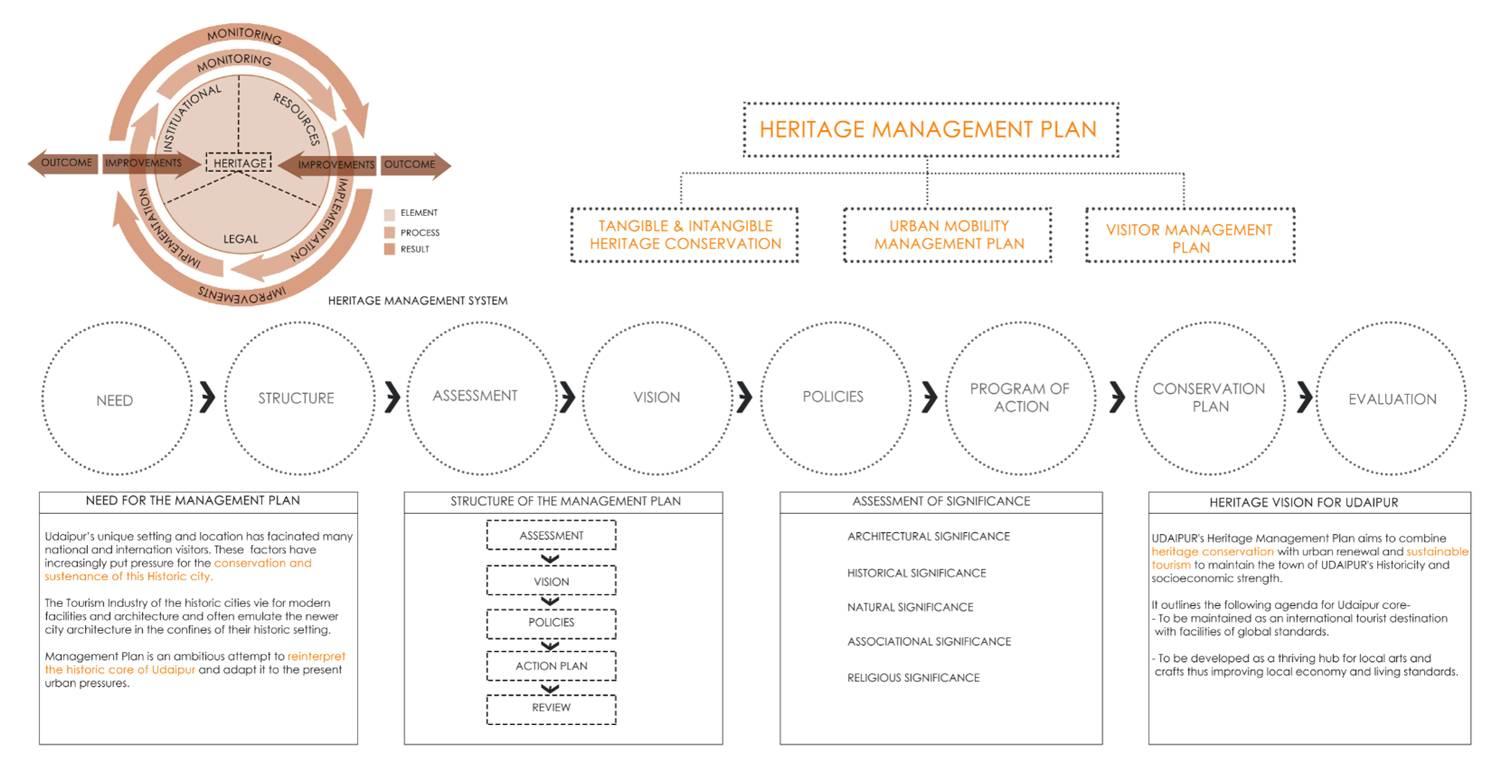Udaipur | The need for Revival and Regeneration of Heritage through Community Engagement
Urban areas or urban centers are complex and dynamic systems. Towns and cities are centers of political and economic power that also reflect the many processes that drive physical, social, environmental and economic transitions. In most of the cases, towns and cities are themselves prime generators of many of these changes. Every city has pockets of underused and underutilized land or distressed and decaying urban areas.
These pockets of underused and neglected land weaken the city‘s image, livability, and productivity. These areas are usually the result of changes in the growth of the urban areas and their productivity patterns. Increased urbanization is also an important cause of this decay where certain areas of the cities are developed while many other areas, especially the old, historic cores are completely neglected. Most historic cities have been a premise of traditional settlements superimposed by today‘s urban way of life. Due to various constraints many such historic cores around India are developed to suit the growing needs of the population and for the development of the region with the historicity lying frozen with time.
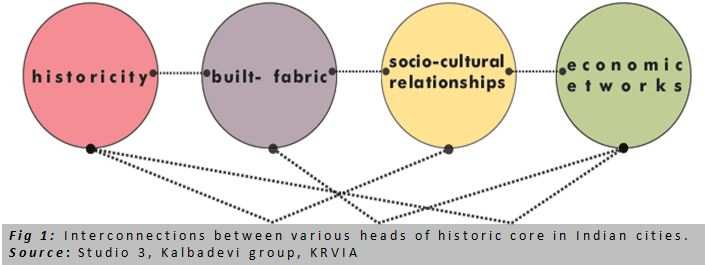
The historic character is either lost or left to decay. Many such historic cores have been a center for economic development of that region in the past. However, the development plans that are made keeping in mind the development quotient of today‘s world seem to completely neglect the historic core, its architectural and cultural importance. This also leads to the loss of association of the local communities with the region‘s built and cultural heritage. Efforts for the conservation of the built and unbuilt heritage have been undertaken by many major cities. However, when two and three tier cities and smaller historic towns are considered, minimal efforts are undertaken that invest in and encourage projects that work toward conserving this heritage and making it relevant to the local communities attached to it.
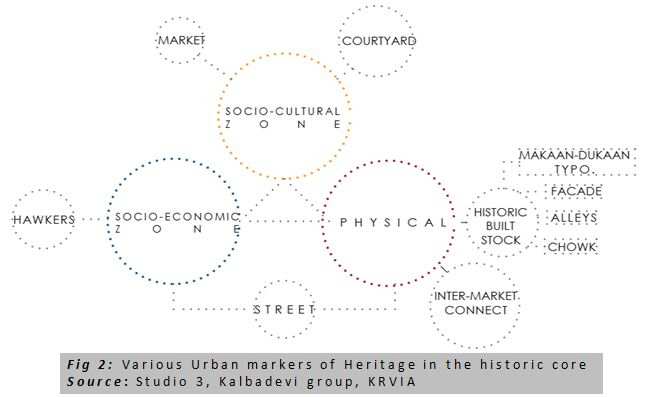
The heritage fabric of Udaipur creates an excellent example of harmony between its natural elements and the built form. Like other medieval cities, the ancient city center of Udaipur is a sacred place with respect to administration, architecture, and religion. The most dominating feature of Udaipur is Lake Pichola, the urban fabric along which represents the development of the historic core. The lake influences favorable changes in the micro-climate of the region where people are faced with low humidity, scorching heat and glare.
The overall architectural style of Udaipur is an amalgamation of Rajput, Mughal and European styles with the city palace being the most important landmark of the city. The historic core comprises of various traditional havelis, smaller palaces, temples and ghats depicting a strong influence of Rajput and Mughal art styles. The most prevalent feature of buildings is the peacock arch supported by fluted columns that forms a highlight of Rajput architectural style. Windows have tinted glass and stone jaali work that offer privacy and reduce solar radiation. Other remarkable elements of Rajput architecture visible in the historic core are expansive balconies that create a visual link with the water bodies, the arched elements over doorways and windows, the use of sandstone, and whitewashed walls of the havelis.
Udaipur is also famous for its local handicrafts, traditional performing arts and cuisines. Local resident communities within the core have been involved with these crafts and arts from various generations. Both the tangible and the intangible aspects of Udaipur combine to form the heritage of the city. The historic core of the city has mixed land-use, with the typology of using the ground floor for commercial purpose while the top floors have a residential use. However, with time, the increased tourist footfall and change in development pattern has diluted the hierarchies in the built form. The most significant factor that has affected the historic fabric of the city is the increased tourism and the various architectural amenities that have added on to the original built fabric to manage this increased number of tourists.
Local community involvement
The heritage of a place is often very important to the community: it provides an identity, can hold memories and meaning far beyond its architectural or historic importance, and contributes to a unique environment. Thus the process of conservation has to be an inclusive approach, by including social factors of development, in addition to economic and physical factors. , it has to be realized that heritage is not only the physical entity, but also the social and cultural actions.
The whole paradigm of heritage conservation has objectified and materialized the places of historic importance. This has led to the low prioritization of the social value of these heritage places. Cultures and social attributes are simply not an accumulation of things and people but are better understood in terms of a series of processes by which new and old practices are adapted and adopted within a cultural system. Considering heritage to form the cultural capital and a way of connecting people with each other and with the environment that surrounds them, their involvement in local heritage can be considered as a form of social action.
The association of people to their heritage includes the meanings assigned to these places that become a part of the significance, particularly the social significance. To get into the depths of the social significance of a heritage place, it is important to look at the associated local communities and the worlds of ordinary people. Positioning the various attributes that define heritage places and the way local places become heritage place not merely by the physical identity, but by the association and viability to the community is very crucial to be understood. The struggle of indigenous people for recognition of their rights over traditional land calls for a demonstration of a tangible linkage between the community and their local landscape. It is this link that can aid in conservation of not just the physical form, but the sense of place, community, belonging and all the intangible aspects that constitute the attributes of social significance.
Current state of conservation
In the present society, heritage, values, attitudes and belief systems are all manifested by material remains. The process of heritage is now being looked at holistically with the social, cultural and economic aspects as underpinnings. However, the idea of heritage conservation has to be looked much beyond the physical intervention, as a larger process that is supported by academic research, inquiry, policy making and planning for sustainability. The idea of multi- disciplinary approach and inter- disciplinary approach, have to be realized as a method to arrive at an inclusive development, where heritage co-exists with the needs of the present day society. The main issue that is faced is designation of heritage, how cultural forms, tangible and intangible, qualify for designation and protection as heritage? The designation and management of heritage, depends on the potential it has as a public good, its capability of positively impacting the community. In Udaipur, heritage is viewed from the point of view of increasing tourism and catering to their growing needs and not from the perspective of conserving and protecting it.
Recommendations
Conservation policies and actions may not apply to the whole city, but these policies and actions need to be located within the overall planning framework for the city. Macro-planning efforts need to indicate and be cognizant of the need for detailed analysis of the historic urban environment and its conservation needs.
Defining the acceptable degree of change based on typological studies of the urban fabric is an important tool to manage historic urban fabric. This information should inform strategic urban planning efforts, and together with a flexible decision-making process will result in better conservation outcomes.
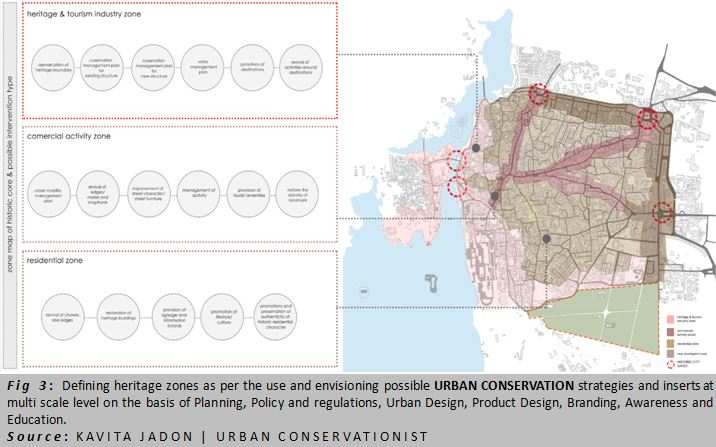
Traditional construction techniques, materials, and methods are often disregarded as inferior or considered too time consuming and, therefore, too costly to use in the process of urban regeneration or rehabilitation. However, the abandonment of traditional methods or materials invariably has long-term detrimental effects, not just to the fabric itself but also in the eventual loss of know-how and the disappearance of traditional materials.
Enhanced information and tools that evaluate the long-term cost/benefit of using more traditional approaches can assist in making the case for sustaining the use of traditional materials and methods.
There are good, locally developed guidelines that deal with issues such as adaptive reuse of buildings, urban regeneration, and infill development, but there is little generic information available that can be easily adapted to local conditions. Therefore, heritage-based organizations should play a strategic role in helping to fill this information gap.
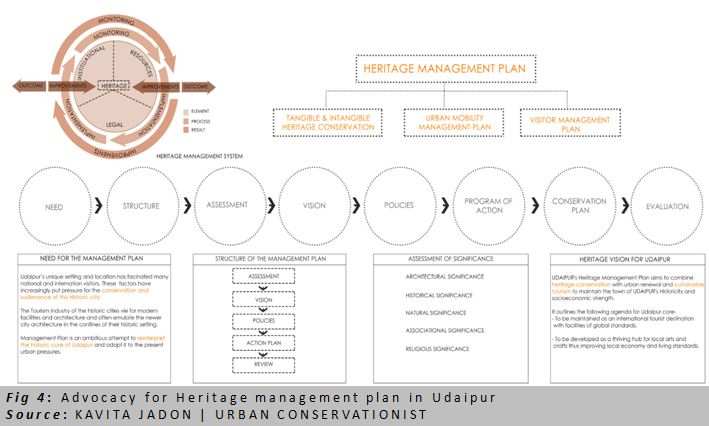
About the Authors
Daksh Jain
Trained as an Architect (Honors in B. arch, Gold medallist; JNVU) and an Urban designer (kRVIA), Daksh Jain is a resident of Udaipur. His interests traverse in the domain of Urban planning, Urban design, Heritage conservation, Development finance and Policy framework. His works in academia follows the lines of Sociology, Ecology, Economics, Cultural studies, Informality and inclusive public oriented designs.
Currently, he is working as an independent researcher on the topic- City life, Culture and Consumption – Emerging urban phenomena.
He is also the recipient of Bhamashah Award for excellence in Academics by Eternal Mewar,Maharana Mewar Foundation in 2019.
Hanisha Chothani
Architect and an Urban conservationist based in Mumbai. Her works address the importance of historicity and heritage in day to day life. She has been training under Khaki Heritage Foundation in Mumbai to promote sustainable cultural heritage and its conservation. She is an advocate of community led heritage regeneration programs.
Born and brought up in Mumbai, her interest lies in the heritage and architectural styles of historic core of tier 2 and tier 3 cities. She has extensively documented heritage structures in Jaipur, Udaipur, Hyderabad, Jodhpur, Bhuj amongst others. She is also working on developing trails of heritage based on different themes in Mumbai.
To join us on Facebook Click Here and Subscribe to UdaipurTimes Broadcast channels on GoogleNews | Telegram | Signal



